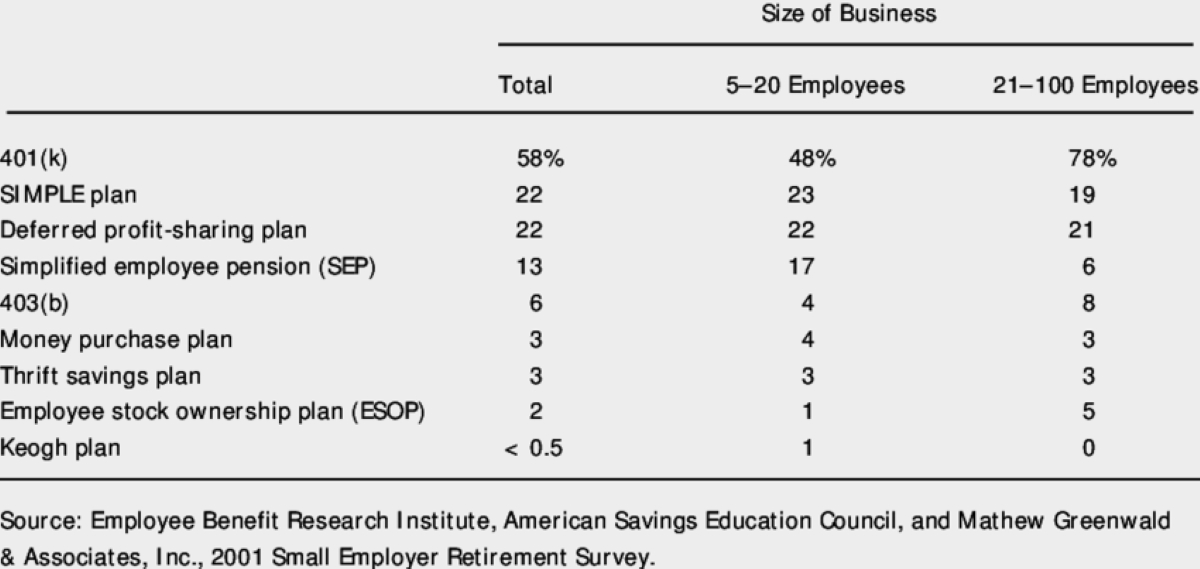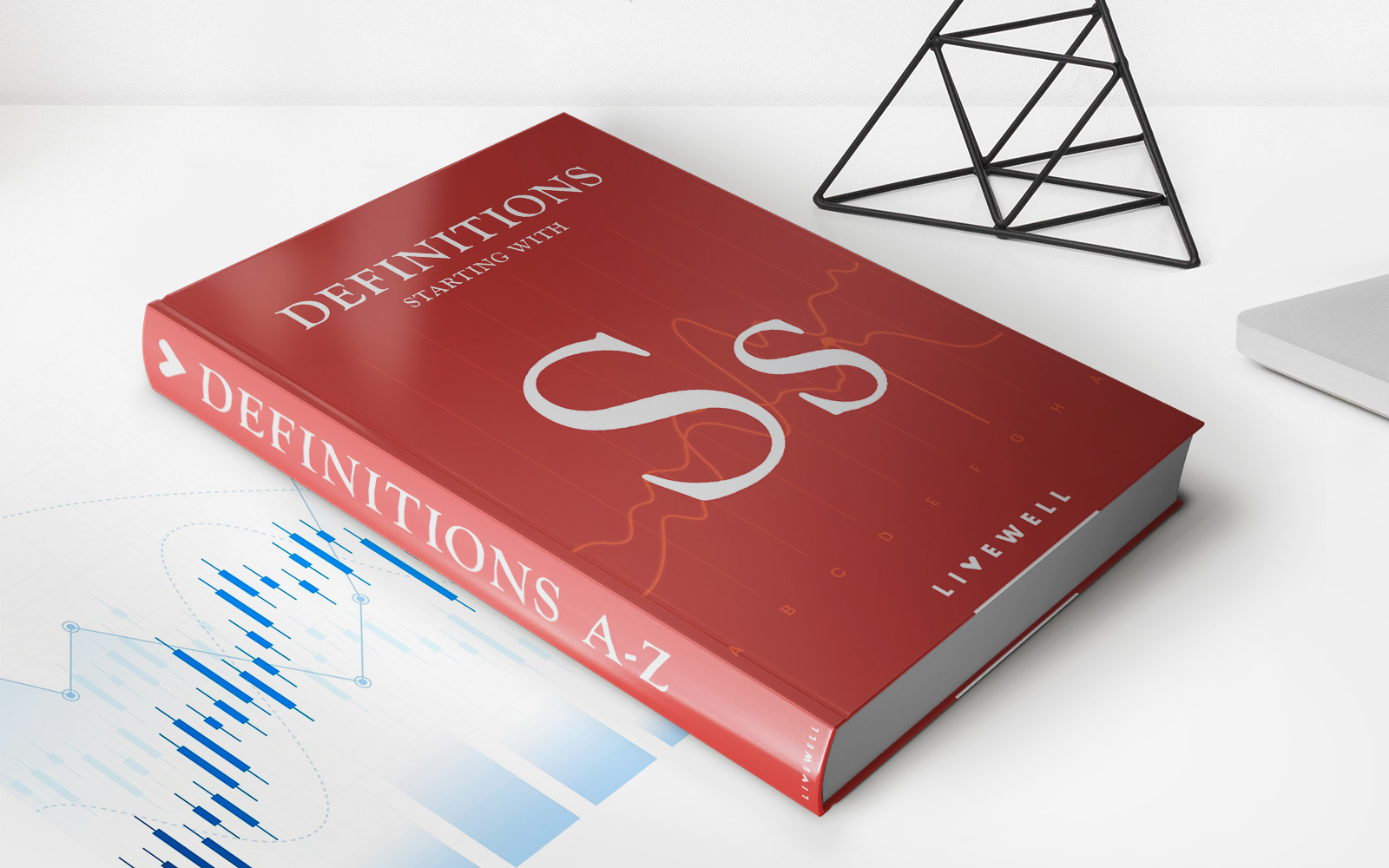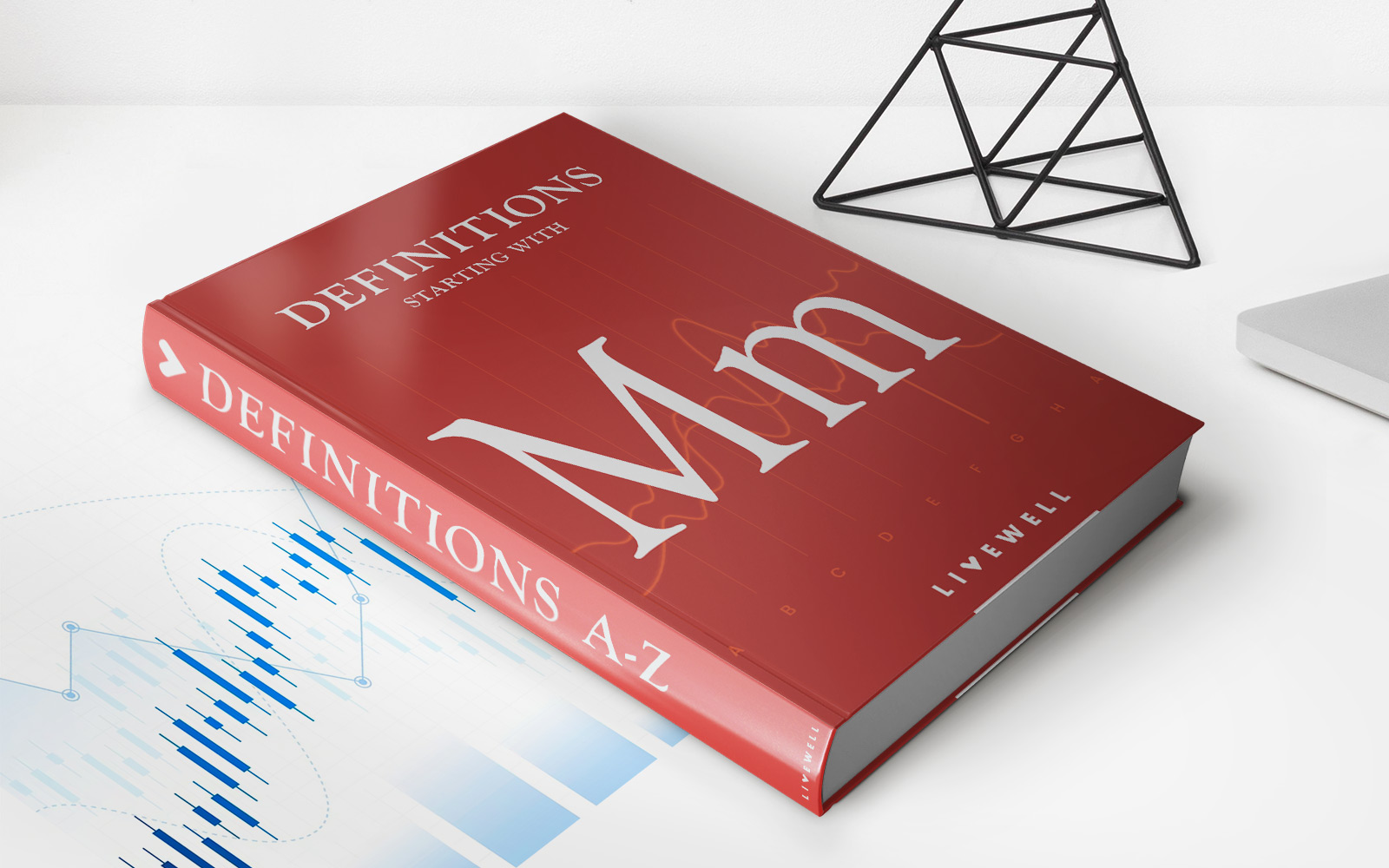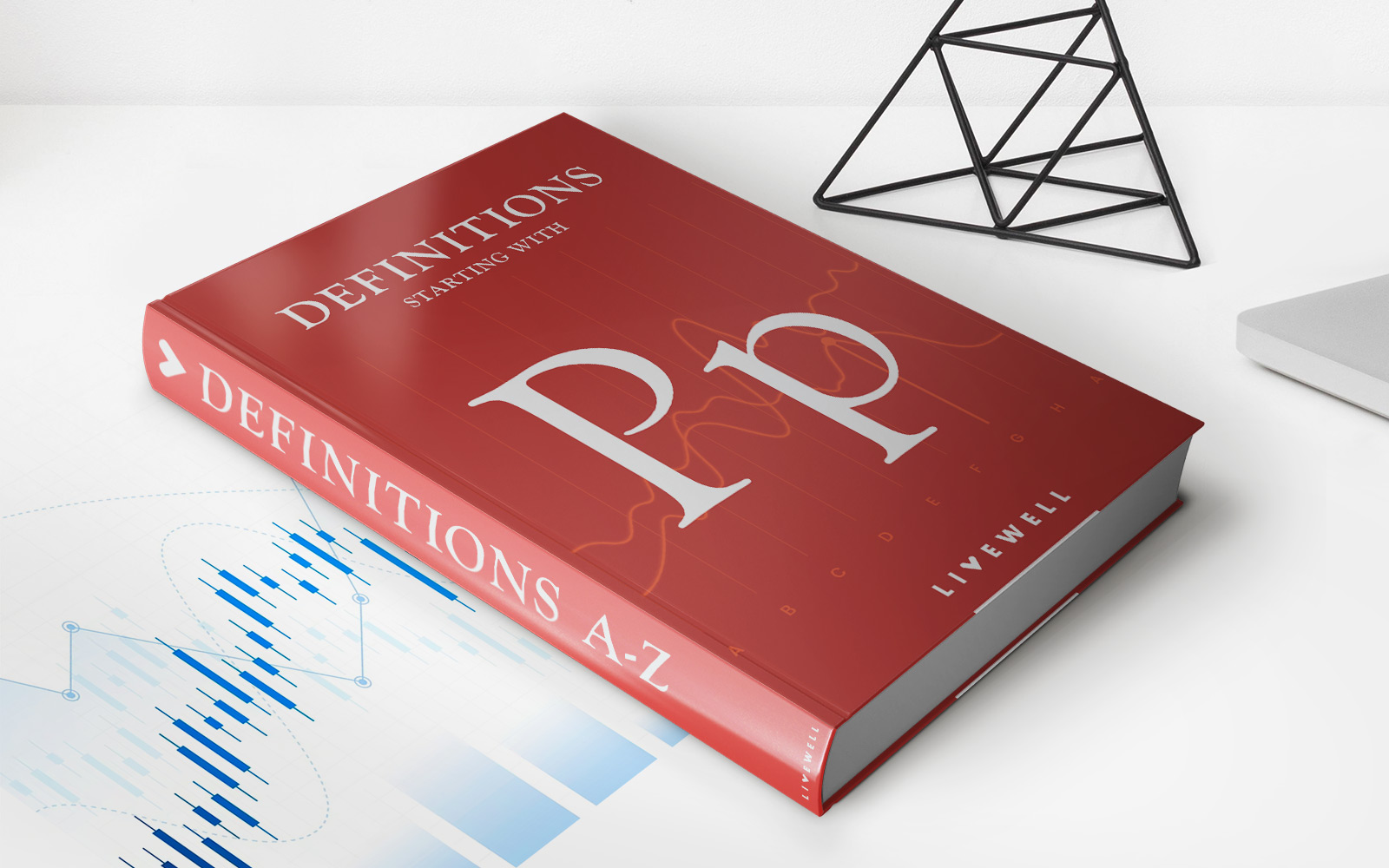Home>Finance>What Is The Difference Between Defined Benefit Plans And Defined Contribution Plans
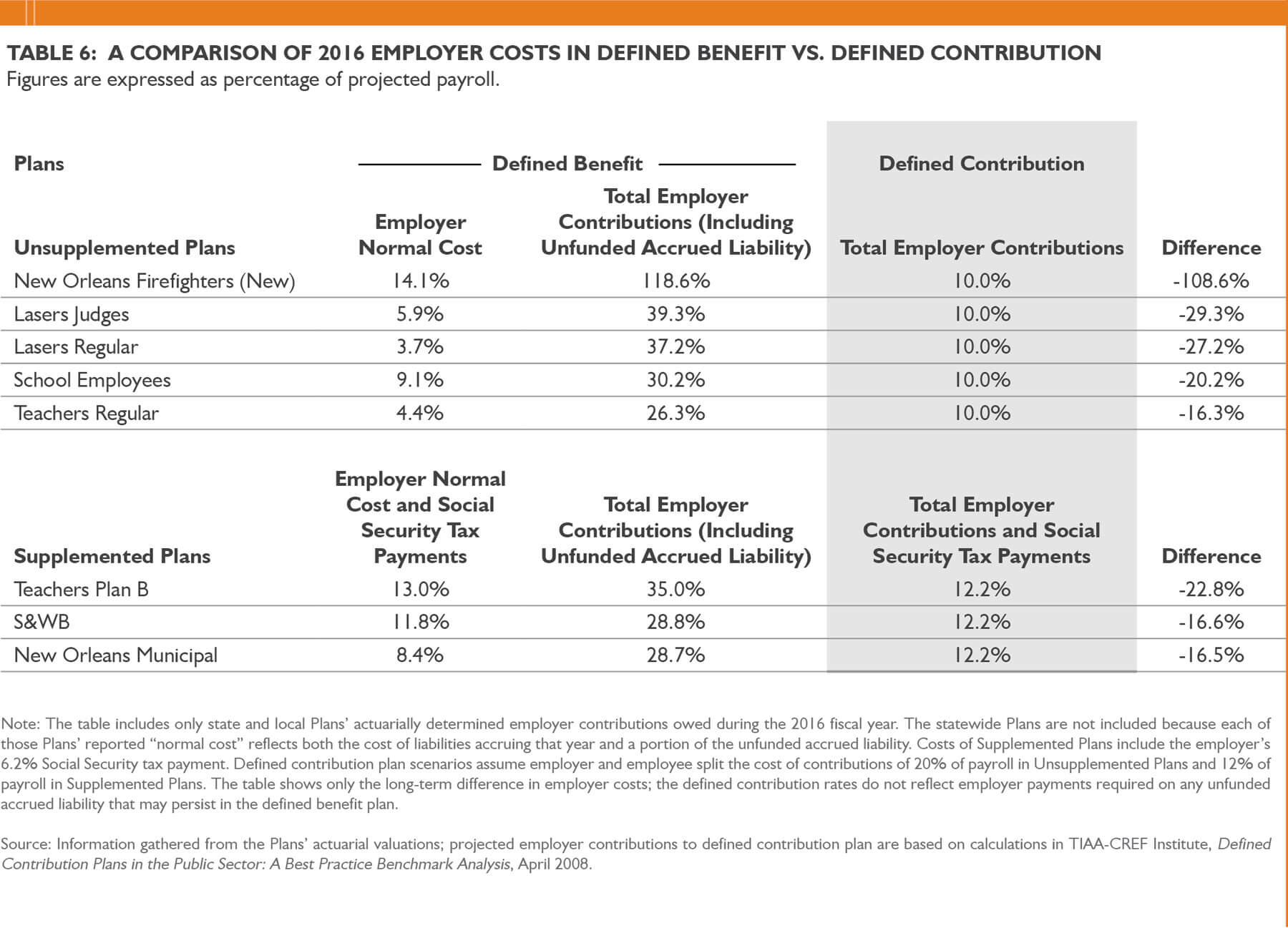

Finance
What Is The Difference Between Defined Benefit Plans And Defined Contribution Plans
Modified: December 29, 2023
Learn about the key distinctions in finance between defined benefit plans and defined contribution plans. Enhance your understanding of retirement options and financial planning.
(Many of the links in this article redirect to a specific reviewed product. Your purchase of these products through affiliate links helps to generate commission for LiveWell, at no extra cost. Learn more)
Table of Contents
- Introduction
- Overview of Defined Benefit Plans
- Characteristics of Defined Benefit Plans
- Funding of Defined Benefit Plans
- Advantages of Defined Benefit Plans
- Disadvantages of Defined Benefit Plans
- Overview of Defined Contribution Plans
- Characteristics of Defined Contribution Plans
- Contribution Requirements for Defined Contribution Plans
- Investment Options in Defined Contribution Plans
- Advantages of Defined Contribution Plans
- Disadvantages of Defined Contribution Plans
- Comparison between Defined Benefit and Defined Contribution Plans
- Factors to Consider when Choosing between Defined Benefit and Defined Contribution Plans
- Conclusion
Introduction
Retirement planning is an essential aspect of financial management, and choosing the right retirement plan is a critical decision. Two common types of retirement plans that individuals and companies often consider are defined benefit plans and defined contribution plans. Understanding the key differences between these two plans can help individuals make informed decisions about their retirement savings.
A defined benefit plan is a traditional pension plan where an employer promises a specified retirement benefit to its employees. The benefit is typically based on a range of factors, including the employee’s salary and years of service. On the other hand, a defined contribution plan is a retirement plan where both the employer and employee make contributions, which are then invested on behalf of the employee.
Both types of plans have unique characteristics, advantages, and drawbacks that need to be considered. This article aims to provide a comprehensive comparison of defined benefit plans and defined contribution plans, allowing individuals to make informed decisions about their retirement savings.
Overview of Defined Benefit Plans
Defined benefit plans, often referred to as traditional pension plans, provide retired employees with a guaranteed income for life. These plans are typically sponsored and managed by employers, who bear the investment and longevity risks associated with providing the promised benefits.
Under a defined benefit plan, the retirement benefit is predetermined based on a formula that considers factors such as salary history, years of service, and age at retirement. The formula is designed to provide a predictable and stable income stream in retirement, which is usually a percentage of the employee’s average salary over a specific period of employment.
It is the responsibility of the employer to ensure that there are sufficient funds to meet the pension obligations to retired employees. This can involve making regular contributions to the plan, investing those funds, and managing the plan’s assets over time. The employer may work with actuaries to determine the amount of contributions required to adequately fund the plan and mitigate any potential funding shortfalls.
One of the key advantages of defined benefit plans is the security and predictability they offer retirees. These plans provide a guaranteed income, which can be particularly beneficial for individuals who may live longer than expected or experience fluctuations in investment returns during retirement.
Furthermore, defined benefit plans offer the advantage of professional management of pension assets. Employers typically invest the plan’s funds in a diversified portfolio, aiming to generate the necessary returns to meet the future pension obligations. This relieves employees from the burden of managing their own investments and allows them to focus on their careers.
However, defined benefit plans are becoming less common in today’s workforce due to the financial risks and associated costs involved for employers. The funding requirements and regulatory compliance for these plans can pose significant challenges for businesses, particularly as life expectancies increase and investment returns become more uncertain.
Characteristics of Defined Benefit Plans
Defined benefit plans have several notable characteristics that distinguish them from other retirement plans:
- Predictable Retirement Benefit: Unlike defined contribution plans, where the retirement benefit depends on the performance of investments, defined benefit plans provide a predetermined benefit amount. This gives employees peace of mind, knowing the exact income they will receive in retirement.
- Employer Responsibility: Employers bear the financial responsibility of funding and managing the plan. They are required to make contributions to the plan based on actuarial calculations to ensure there are sufficient funds to meet the promised benefits upon retirement.
- Benefit Calculation Formula: The retirement benefit in a defined benefit plan is determined by a formula that considers factors such as an employee’s salary history, years of service, and age at retirement. This formula ensures a fair and consistent method for calculating benefits for all eligible employees.
- Longevity Risk: With defined benefit plans, the employer assumes the risk of employees living longer than anticipated. This means that if retirees live longer than expected, the employer may need to provide benefits for a longer period, potentially increasing the overall cost of the plan.
- Portability Limitations: Defined benefit plans are typically designed to provide retirement income from a single employer. If an employee changes jobs frequently, they may not have the opportunity to fully vest in the plan or receive the full benefit amount upon retirement.
- Regulatory Compliance: Due to the complex nature of defined benefit plans, employers must adhere to various regulatory requirements. These include reporting, funding, and disclosure obligations to ensure the plan is adequately funded and managed in accordance with applicable laws.
While defined benefit plans offer the advantage of a guaranteed retirement income, there are also potential drawbacks and challenges associated with these plans. It is important for individuals and employers to carefully consider these characteristics and weigh them against other retirement plan options.
Funding of Defined Benefit Plans
Funding a defined benefit plan involves ensuring that there are sufficient funds to meet the promised retirement benefits for employees. This funding process typically involves a combination of employer contributions and investment returns.
Employers are required to make regular contributions to the plan to ensure its long-term solvency. The amount of contributions is determined by actuarial calculations, which take into account factors such as the plan’s funding status, employee demographics, and expected investment returns. Employers must follow legal guidelines and meet minimum funding requirements set by regulatory bodies.
These contributions are then invested by the plan’s trustees or managers. The investment portfolio is typically diversified across various asset classes, such as stocks, bonds, real estate, and alternative investments. The goal is to earn returns that will help grow the plan’s assets over time and ensure that there are enough funds to pay retirees’ benefits.
It is important to note that the investment performance plays a crucial role in the funding of defined benefit plans. Positive investment returns can help boost the plan’s assets and improve its funding status. Conversely, poor investment performance can lead to funding shortfalls and potentially require additional contributions from the employer to meet the plan’s obligations.
In some cases, if the plan’s assets are not sufficient to cover the promised benefits, the employer may need to make additional contributions to address any funding gaps. This ensures that retirees continue to receive their benefits as promised.
Furthermore, certain financial tools, such as annuity purchases or pension risk transfer transactions, can be used by employers to manage the funding risks of defined benefit plans. These strategies involve transferring some or all of the plan’s liabilities to an insurance company, which assumes the responsibility of paying the retirement benefits.
Overall, funding a defined benefit plan requires careful financial management and monitoring to ensure the plan remains adequately funded and can meet the retirement needs of employees both now and in the future.
Advantages of Defined Benefit Plans
Defined benefit plans offer several advantages for both employees and employers. These advantages contribute to the appeal and popularity of these pension plans:
- Guaranteed Retirement Income: One of the significant advantages of defined benefit plans is the assurance of a steady and predictable retirement income for employees. The benefit amount is determined by a formula that takes into account factors such as salary history, years of service, and age at retirement. This predictable income stream allows retirees to plan their finances with confidence.
- Professional Investment Management: Defined benefit plans are managed by professionals who make investment decisions on behalf of the plan. Employers typically allocate the plan’s assets across different types of investments to generate returns. This relieves employees of the responsibility of managing their own investments and ensures that the plan’s assets are invested in a diversified manner, reducing the risk associated with individual investment choices.
- Risk Pooling: With defined benefit plans, the investment and longevity risks are borne by the employer. This means that retirees are not exposed to the fluctuations of investment returns or the risk of outliving their savings. By pooling the risks across a larger group of employees, the plan’s assets can account for variations in individual circumstances and provide a more stable retirement income for all participants.
- Retirement Security: Defined benefit plans provide retirees with a sense of financial security. They offer a guaranteed income for life, ensuring that retirees have a stable source of funds even during periods of market volatility or economic uncertainty. This security allows retirees to enjoy their golden years without worrying about fluctuations in investment markets or the possibility of outliving their savings.
- Greater Benefit Amounts: Compared to defined contribution plans, defined benefit plans often provide higher benefit amounts, especially for employees with longer tenures and higher salaries. This can significantly enhance an employee’s retirement income and maintain a comfortable standard of living in retirement.
These advantages make defined benefit plans an attractive option for employees seeking a reliable and secure source of retirement income. However, it is important to consider the potential drawbacks and challenges associated with these plans before making a decision.
Disadvantages of Defined Benefit Plans
While defined benefit plans offer numerous advantages, they also have certain disadvantages that individuals and employers should consider:
- Financial Responsibility for Employers: Employers have the financial responsibility of funding and managing the plan to meet the promised retirement benefits. This can be a significant burden, particularly for small businesses or those operating in volatile industries. Employers must make contributions to the plan, which can fluctuate based on factors such as investment performance, interest rates, and employee demographics.
- Complexity and Regulation: Defined benefit plans are subject to complex regulations, including reporting, funding, and disclosure requirements. Employers must ensure compliance with these regulations, which can result in administrative burdens and additional costs. Failure to meet regulatory obligations may have legal consequences and potentially impact the plan’s funding status.
- Limited Portability: Defined benefit plans are typically designed to provide retirement income based on an employee’s years of service with a specific employer. If an employee changes jobs frequently or leaves before becoming fully vested in the plan, they may not receive the full benefit amount at retirement. This lack of portability can be a disadvantage for individuals who value flexibility and mobility in their careers.
- Potential Funding Shortfalls: Defined benefit plans rely on employer contributions and investment returns to fund the promised benefits. If the plan’s investments underperform or if retirees live longer than expected, funding shortfalls may occur. In such cases, employers may be required to make additional contributions to cover the shortfall, which can strain their financial resources.
- Limited Control for Employees: Unlike defined contribution plans, where employees have control over their investment choices, defined benefit plan participants have limited control over investment decisions. The investment strategy and management of the plan’s assets are determined by the employer or plan trustees. This lack of control can be a disadvantage for employees who prefer to have more autonomy over their retirement savings.
These disadvantages highlight some of the challenges and potential drawbacks of defined benefit plans. It is crucial for individuals and employers to carefully consider these factors when evaluating the suitability of these plans as part of their retirement savings strategy.
Overview of Defined Contribution Plans
Defined contribution plans are retirement savings vehicles where both employers and employees make contributions to individual accounts established for each participant. Unlike defined benefit plans, the ultimate retirement benefit in a defined contribution plan is based on the amount of contributions made and the investment performance of those contributions.
Under a defined contribution plan, employees contribute a portion of their salary to their individual account, often through payroll deductions. Employers may also choose to match a percentage of the employee’s contributions, up to a certain limit. These contributions are typically made on a pre-tax basis, allowing participants to potentially reduce their taxable income in the current year.
The contributions made to a defined contribution plan are then invested in a variety of investment options chosen by the plan’s administrators. These investment options can include mutual funds, stocks, bonds, and other financial instruments. The investment returns and growth of the contributions over time determine the value of the retirement account.
Upon retirement, participants in a defined contribution plan have the option to convert their account balance into a stream of income, typically through annuities or scheduled withdrawals. The amount of retirement income received will depend on the size of the account balance and the prevailing market conditions at the time of retirement.
One of the key advantages of defined contribution plans is the flexibility and portability they offer. Participants have the ability to control their investment choices within the plan, allowing them to align the investments with their risk tolerance and financial goals. Additionally, employees can take their defined contribution plan with them if they change jobs, either by leaving the funds in the current plan, rolling them over to an individual retirement account (IRA), or transferring them to the new employer’s plan.
However, defined contribution plans also shift a greater degree of responsibility and risk onto the employees. Participants bear the investment risk, as the account balance is subject to market fluctuations and investment performance. The retirement income is not guaranteed and is dependent on the contributions made and the investments chosen.
Overall, defined contribution plans offer individuals the opportunity to save for retirement in a tax-advantaged manner, with flexibility and portability. They empower employees to take control of their retirement savings and investment decisions, but also require increased engagement and responsibility in managing their own retirement accounts.
Characteristics of Defined Contribution Plans
Defined contribution plans have several distinct characteristics that differentiate them from other types of retirement plans. Understanding these characteristics is crucial for individuals considering participation in such plans:
- Individual Accounts: Defined contribution plans allocate contributions to individual accounts for each participant. Each participant’s account represents their portion of the overall plan, allowing for a personalized and separate record of their retirement savings.
- Contributions from both Employees and Employers: Defined contribution plans involve contributions from both employees and employers. Employees typically make contributions from their pre-tax salary, often through payroll deductions. Employers may also contribute a matching or non-matching portion of the employee’s contributions, up to a specified limit.
- Investment Options: Participants in a defined contribution plan have the ability to choose from various investment options offered within the plan, such as mutual funds, stocks, bonds, and other investment vehicles. This diversity allows employees to customize their investment strategy based on their risk tolerance and financial goals.
- Account Growth through Investment Returns: The value of an individual’s account in a defined contribution plan grows through investment returns. The contributions made are invested in the chosen investment options, and the performance of those investments over time determines the account balance.
- Portability: Defined contribution plans offer portability, meaning that participants can retain and manage their account even if they change jobs. They have the option to leave the funds in the current plan, roll them over to an individual retirement account (IRA), or transfer them to the new employer’s plan. This flexibility allows individuals to continue building their retirement savings without interruption.
- Retirement Income Based on Account Balance: The primary source of retirement income in a defined contribution plan is the participant’s account balance at the time of retirement. Participants can choose from various retirement income options, such as annuities or scheduled withdrawals, but the amount of income received is dependent on the account balance and the prevailing market conditions at the time of retirement.
These characteristics make defined contribution plans attractive for individuals seeking flexibility, control, and portability in their retirement savings. However, it is important to consider the potential risks and limitations associated with these plans, including market volatility and the responsibility of managing one’s own investments.
Contribution Requirements for Defined Contribution Plans
Defined contribution plans have specific contribution requirements that dictate how much employers and employees are required or allowed to contribute to the plan. These contributions play a crucial role in building the participant’s retirement savings. The contribution requirements can vary depending on various factors such as plan design, government regulations, and employer policies.
Employee Contributions: In a defined contribution plan, employees typically have the option to contribute a portion of their salary to their individual retirement account. These contributions are often made on a pre-tax basis, meaning they are deducted from the employee’s salary before taxes are applied. This pre-tax treatment can provide immediate tax savings for employees by reducing their taxable income in the current year. Some plans may also offer a Roth option, where contributions are made on an after-tax basis, allowing for tax-free withdrawals in retirement.
Employer Matching Contributions: Many defined contribution plans offer employer matching contributions as an incentive for employees to save for retirement. The employer may match a certain percentage of the employee’s contributions, up to a maximum limit. For example, an employer might match 50% of the employee’s contributions, up to 6% of their salary. The matching contributions can vary depending on the employer’s policies, plan design, and affordability.
Employer Non-Matching Contributions: In addition to matching contributions, some employers may make non-matching contributions to the defined contribution plan. These contributions are typically made as a fixed percentage of the employee’s salary or a flat dollar amount. It is up to the employer’s discretion to determine the amount and frequency of these non-matching contributions.
Contribution Limits: Defined contribution plans are subject to contribution limits set by the government to ensure that retirement plans are not used primarily for tax avoidance. There are annual limits on the total contributions that can be made to the plan, including both employee and employer contributions. These limits are periodically adjusted to account for inflation and changes in tax laws. It is important for participants and employers to stay informed about these limits to ensure compliance with the regulations.
Voluntary Employee Contributions: In addition to the required or matched contributions, participants may have the option to make voluntary contributions to their defined contribution plan. These additional contributions can be beneficial for individuals who want to maximize their retirement savings or catch up on contributions if they are nearing retirement age.
It is important for individuals and employers to understand the contribution requirements of their defined contribution plan and take advantage of the opportunities to save for retirement. Contributing consistently and taking full advantage of any employer matching contributions can significantly enhance an individual’s retirement savings.
Investment Options in Defined Contribution Plans
Defined contribution plans offer participants a range of investment options in which they can allocate their retirement savings. These investment options provide individuals with the opportunity to diversify their portfolios and potentially grow their account balances over time. The specific investment options available can vary depending on the plan and the provider, but commonly include:
- Stocks: Defined contribution plans often include individual stocks as an investment option. Stocks represent ownership in a company and offer the potential for capital appreciation over the long term. Participants can choose from a variety of stocks, including large-cap, mid-cap, and small-cap companies, as well as domestic and international stocks.
- Bonds: Bonds are fixed-income instruments that represent loans made by investors to governments, municipalities, or corporations. They provide a predictable income stream through regular interest payments. Defined contribution plans may offer a range of bonds, including government bonds, corporate bonds, and municipal bonds, each with varying levels of risk and return potential.
- Mutual Funds: Mutual funds are investment vehicles that pool money from multiple investors to invest in a diversified portfolio of securities. They offer individuals the opportunity to invest in a professionally managed portfolio of stocks, bonds, or a combination of both. Mutual funds come in various categories, such as index funds, actively managed funds, and target-date funds, providing participants with a range of investment strategies to choose from.
- Exchange-Traded Funds (ETFs): Similar to mutual funds, ETFs are investment funds that hold a diversified portfolio of securities. However, unlike mutual funds, ETFs trade on an exchange like individual stocks, allowing participants to buy and sell shares throughout the trading day. ETFs offer investors exposure to a wide range of asset classes, sectors, and geographic regions.
- Target-Date Funds: Target-date funds (TDFs) are designed to automatically adjust their asset allocation based on the anticipated retirement date of the participant. They typically start with a more aggressive investment mix when retirement is far off and gradually shift toward a more conservative approach as the target date approaches. TDFs provide individuals with a simplified and hands-off investment strategy.
- Money Market Funds: Money market funds aim to preserve capital and offer a stable value by investing in short-term, low-risk instruments like Treasury bills and commercial paper. These funds provide participants with a highly liquid investment option and are often seen as a conservative choice within a defined contribution plan.
The availability of these investment options gives participants the flexibility to choose the allocation that aligns with their risk tolerance and financial goals. It is essential for individuals to consider their time horizon, investment objectives, and risk tolerance when selecting investments within their defined contribution plan.
Moreover, many defined contribution plans provide tools and resources to help participants make informed investment decisions. Participants may have access to educational materials, investment advice, and online tools that can assist them in understanding the risks and potential returns associated with different investment options.
It is important for individuals to regularly review and rebalance their investment allocations within the defined contribution plan to ensure that they are aligned with their long-term goals and risk tolerance. Consulting with a financial advisor can also provide guidance and expertise in managing investments within a defined contribution plan.
Advantages of Defined Contribution Plans
Defined contribution plans offer several advantages for both employees and employers. These advantages have contributed to the widespread popularity of these retirement savings vehicles:
- Individual Control and Flexibility: One of the key advantages of defined contribution plans is the individual control and flexibility they offer. Participants have the ability to choose how much to contribute to their retirement account and how to allocate those contributions among different investment options. This control allows individuals to tailor their retirement savings strategy to their specific financial goals and risk tolerance.
- Portability and Continuity: Defined contribution plans are typically portable, meaning participants can retain their retirement savings even if they change jobs. They have the option to leave the funds in the current plan, roll them over to an individual retirement account (IRA), or transfer them to the new employer’s plan. This portability ensures the continuity of retirement savings and avoids the potential disruption of starting from scratch with a new plan.
- Employer Matching Contributions: Many defined contribution plans offer employer matching contributions, where employers match a percentage of the employee’s contributions up to a certain limit. This matching contribution serves as an additional benefit and increases the employee’s retirement savings. It is essentially free money from the employer that helps boost the participant’s overall retirement nest egg.
- Tax Advantages: Contributions made to a defined contribution plan are often made on a pre-tax basis, meaning they are deducted from the employee’s salary before taxes are applied. This immediate tax advantage reduces the participant’s taxable income, potentially lowering their tax liability in the current year. Additionally, the investment earnings within the plan grow on a tax-deferred basis until withdrawals are made during retirement.
- Investment Growth Potential: Defined contribution plans provide participants with the opportunity for investment growth over time. The contributions made to the plan are invested in a range of investment options, such as stocks, bonds, and mutual funds, which have the potential to generate returns. Participants can benefit from compounding growth as their investments increase in value and generate additional earnings over the long term.
- Transparency and Awareness: Participants in defined contribution plans have access to regular statements and online tools that provide a clear view of their retirement savings and investment performance. This transparency allows individuals to monitor their progress toward their retirement goals and make informed decisions about their contribution levels and investment choices.
These advantages make defined contribution plans attractive options for individuals seeking control, flexibility, and portability in their retirement savings. The ability to maximize contributions, receive employer matching contributions, and potentially benefit from investment growth can significantly enhance an individual’s retirement readiness.
Disadvantages of Defined Contribution Plans
While defined contribution plans offer several advantages, they also have certain disadvantages that individuals and employers should consider:
- Investment Risk: Participants in defined contribution plans bear the investment risk. The value of their retirement account is subject to market fluctuations and the performance of the chosen investments. Poor investment returns during critical periods can significantly impact the account balance and, ultimately, the retirement income.
- Limited Retirement Income Guarantee: Unlike defined benefit plans that provide a guaranteed retirement income, defined contribution plans do not offer a specified benefit amount. The retirement income is determined by the participant’s account balance, which is subject to market conditions and investment returns. This lack of income guarantee can create uncertainty and potential volatility in retirement planning.
- Individual Responsibility: Participants in defined contribution plans are responsible for managing their investment choices and making important decisions regarding contribution levels and asset allocation. This individual responsibility can be daunting for individuals who lack financial knowledge or are not actively engaged in managing their retirement savings.
- Contributions May Not Be Maximized: While defined contribution plans allow for individual contributions, some participants may not contribute enough to maximize the benefits of the plan. Factors such as competing financial priorities, limited disposable income, or lack of awareness about the importance of retirement savings can lead to suboptimal contribution levels.
- Risk of Insufficient Savings: Participants in defined contribution plans may not accumulate sufficient savings for retirement if contributions are inadequate or investment returns are poor. This risk is especially significant if individuals start saving for retirement later in their careers, contribute inconsistently, or face unexpected financial challenges.
- Complexity of Investment Choices: The array of investment options available in defined contribution plans can be overwhelming for some individuals. Evaluating and selecting appropriate investments requires financial knowledge and the ability to assess risk and return potential. Lack of investment expertise may lead to suboptimal investment decisions.
It is essential for individuals to be aware of these disadvantages and take steps to minimize the potential pitfalls associated with defined contribution plans. Regular contributions, seeking professional advice when needed, and monitoring investment performance can help individuals navigate these potential challenges and maximize the benefits of their retirement savings.
Comparison between Defined Benefit and Defined Contribution Plans
Choosing the right retirement plan requires a thorough understanding of the key differences between defined benefit plans and defined contribution plans. Here is a comparison of these two types of retirement plans:
- Employer Responsibility: In a defined benefit plan, employers bear the responsibility of funding the plan and ensuring that the promised retirement benefits are paid out. On the other hand, in a defined contribution plan, the responsibility is shifted to the individual employee to manage their own retirement savings.
- Predictability of Retirement Income: A defined benefit plan offers a predictable retirement income, as the benefit amount is determined by a formula based on salary history, years of service, and age at retirement. In contrast, a defined contribution plan provides no predetermined benefit amount, with retirement income depending on the account balance at retirement.
- Investment Risk: With defined benefit plans, the employer assumes the investment risk and must ensure that there are sufficient funds to meet future benefit obligations. In defined contribution plans, the investment risk is borne by the individual account holder, as the account balance is subject to market fluctuations and investment performance.
- Portability: Defined benefit plans are typically tied to a specific employer, making them less portable. Employees who change jobs frequently may not fully vest in the plan or receive the full benefit amount at retirement. In contrast, defined contribution plans are highly portable, allowing participants to retain and manage their retirement savings even if they change jobs.
- Control and Flexibility: Defined contribution plans offer individuals greater control and flexibility over their retirement savings. Participants can choose how much to contribute, how to allocate those contributions among various investments, and when to start taking withdrawals in retirement. Defined benefit plans offer less control, as the employer manages the investments and determines the timing and amount of benefit distributions.
- Benefit Amounts: Defined benefit plans often provide higher benefit amounts, particularly for employees with longer tenures and higher salaries. In defined contribution plans, the retirement benefit is based on the account balance, which can vary greatly depending on contributions and investment performance.
- Risk Pooling: Defined benefit plans pool the investment and longevity risks among a large group of employees, with the employer assuming those risks. Defined contribution plans shift the investment, longevity, and other risks to the individual participants, as they are responsible for managing their own retirement savings and assuming the associated risks.
Ultimately, the choice between a defined benefit plan and a defined contribution plan depends on an individual’s specific financial situation, risk tolerance, and retirement goals. Defined benefit plans offer a reliable and predictable retirement income, but they require employers to bear the financial responsibility. Defined contribution plans provide greater individual control and portability, but they shift the investment and retirement risks to the employees.
It is important for individuals to carefully evaluate their options, consider their long-term financial goals, and seek professional advice if needed to determine which plan aligns best with their unique circumstances and retirement objectives.
Factors to Consider when Choosing between Defined Benefit and Defined Contribution Plans
Choosing between a defined benefit plan and a defined contribution plan requires careful consideration of several key factors. Each type of plan has its own advantages, disadvantages, and considerations that can impact an individual’s decision:
- Retirement Income Needs: Consider your desired retirement lifestyle and financial goals. If you prefer a predictable and guaranteed retirement income, a defined benefit plan may be more suitable. If you are comfortable with more flexibility and are willing to take on the investment risk, a defined contribution plan may align better with your needs.
- Risk Tolerance: Assess your risk tolerance and comfort level with investment fluctuations. Defined benefit plans provide a level of protection against market volatility since the employer carries the investment risk. However, defined contribution plans require individuals to bear the investment risk themselves. Consider how comfortable you are with potential fluctuations in the value of your retirement savings.
- Employment Stability: Consider your job stability and the likelihood of changing employers or experiencing job interruptions. Defined benefit plans may offer greater security if you anticipate working for the same employer for an extended period. However, if you expect to change jobs frequently, a defined contribution plan’s portability may be more beneficial, allowing you to retain and manage your retirement savings across different employers.
- Control and Flexibility: Assess your preferences for control and flexibility over your retirement savings. If you desire more control in managing your investments and making decisions about contributions and withdrawals, a defined contribution plan may be preferable. If you prefer to have less responsibility and to rely on the employer’s management of investments and distribution of benefits, a defined benefit plan may be more appealing.
- Employer Contributions: Consider the employer’s contribution policy, especially if they offer matching contributions. Employer matching contributions can significantly boost your retirement savings and can make a defined contribution plan more attractive. Compare the matching percentages and limits between the two plan types and evaluate how much the employer’s contributions can add to your retirement savings.
- Longevity and Life Expectancy: Assess your health, family history, and life expectancy. Defined benefit plans provide a guaranteed income for life, which can be advantageous if you believe you may live longer than average or have concerns about outliving your savings. Defined contribution plans require careful retirement income planning to ensure that accumulated savings are sufficient to cover your expenses throughout your entire retirement.
- Understanding of Investments: Evaluate your knowledge and comfort level with investments. Defined benefit plans do not require participants to make investment decisions, as the investments are managed by the employer. If you feel uncertain about making investment decisions, a defined benefit plan may be more suitable. However, if you have investment expertise or are willing to educate yourself, a defined contribution plan may provide more opportunities for investment growth.
Consider these factors in relation to your specific circumstances, financial goals, and risk appetite when choosing between a defined benefit plan and a defined contribution plan. It may also be valuable to consult with a financial advisor who can provide personalized guidance based on your individual needs and help you make an informed decision.
Conclusion
Choosing between a defined benefit plan and a defined contribution plan is a significant decision that can impact an individual’s retirement savings and financial future. Each plan type offers unique advantages and considerations, and the choice ultimately depends on an individual’s specific circumstances and preferences.
Defined benefit plans provide retirees with a guaranteed income for life, with employers shouldering the investment risk and responsibilities. These plans offer stability, predictability, and the potential for higher benefit amounts, making them attractive for individuals seeking a reliable retirement income and less involvement in investment decisions.
On the other hand, defined contribution plans offer individuals control, flexibility, and portability in managing their retirement savings. These plans empower participants to make their own investment decisions, benefit from employer matching contributions, and potentially achieve higher investment growth. However, they also involve more risk and responsibility on the part of the individual, including managing investment choices and ensuring sufficient savings for retirement.
When considering these two plan types, it is essential to assess factors such as retirement income needs, risk tolerance, job stability, employer contributions, and comfort with investment decision-making. Additionally, understanding one’s long-term financial goals and personal preferences for control and security can help inform the decision-making process.
Furthermore, it is important to regularly review and reassess your retirement strategy, regardless of the type of plan chosen. As circumstances and goals evolve, adjustments may be needed to ensure that your retirement savings continue to align with your objectives and provide the financial security you desire.
Ultimately, consulting with a financial advisor can provide valuable insights and guidance in navigating the complexities of retirement planning and making the optimal choice between a defined benefit plan and a defined contribution plan.
Remember, whether you select a defined benefit plan or a defined contribution plan, the key is to start saving for retirement as early as possible and remain proactive in managing and monitoring your savings over time. By doing so, you can work towards building a solid foundation for a financially secure and comfortable retirement.


